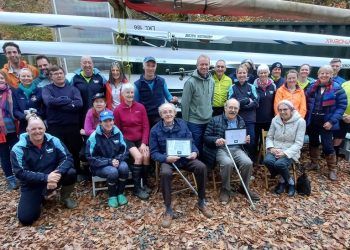Report by Poppy Dooley.
Twenty years and more than 2,000 players to choose from but the task for veteran coach Alan Gray was straight forward: Select your all-time best XV from players you have worked with at Keswick School since starting there in 2000.
Well, after much soul-searching, we can today for the first time reveal Alan’s personal choice, which contains several surprise twists and a deeply poignant but fully merited selection.
His dream team features some past pupils who have gone on to play rugby as professionals or semi-pros, including the star of what Alan calls Keswick School’s greatest ever rugby victory who later scored for England in the Under-20s world cup final in Japan in 2009.
In typical fashion, Alan has done his own thing by not picking any out-and-out second-rows, the back five of his pack consisting entirely of loose forwards to fit in with the school’s rugby philosophy of a fast, free-flowing game. “That playing philosophy is directly relevant to determining the composition of the dream team,” explained Alan, 65, who is not yet sure if he will carry on into the next school year before retiring.
Half a dozen of the team were from the same school year which Alan rates as the best in the school’s history. Also included is Keswick School’s most prolific try-scorer and Keswick Rugby Club’s current 1st XV captain, along with three of Cumbria’s senior side which won the county cup at Twickenham last year.
Although Alan was a pioneer in coaching girls rugby – and three of his female proteges are current international players – his select XV is male only as there is no mixed gender rugby.
Explaining his unconventional choice of forwards, Alan added: “Collectively, the dream team pack selection aims to represent what is necessary to play winning rugby in the Keswick School style. It can be taken as a given that those selected are adept scrummagers and lineout technicians and their real quality exists in the X-factor attributes which make them special.
“This is a pack who learned their rugby in the clarty environs of the pitches of the main school site where they were told that if they could play well in such conditions they could play well anywhere. Rugby law dictates that for all matches, squads must contain at least four forwards who can play in the front row. This is a coach’s lifeline when competition for places is contentious.”
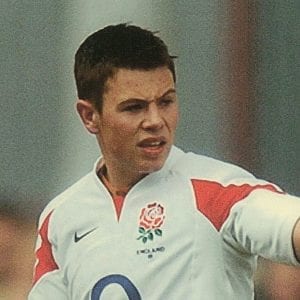
15. Full-back:
ROBERT MILLER
Robert was tactically astute when he was 11 and given the extent of his natural ability, it was easy to predict a bright future. He became a schoolboy international stand-off in the same year as current England stars Courtney Laws, Ben Youngs and Joe Marler but at the same time – and in the best interests of the school team – he was happy to switch to inside-centre. Rob was man of the match in Keswick School’s greatest ever result, an away win at Royal Grammar School Newcastle in round five of the 2005 Daily Mail Cup. After leaving school, Rob played professionally for Newcastle Falcons, Sale Sharks and his current club Wasps, having scored for England in their defeat by New Zealand in the U-20 world cup final in Japan in 2009.

14. Right-wing:
PETER WEIGHTMAN
Peter was a muscular presence in a year where raw-power was not abundant. His natural fitness was boosted by dedicated hard training which brought the twin rewards of an improved skill set and line-busting physicality. Since leaving school and Northumbria University, Peter has played for Newcastle Falcons and at National League level for Tynedale, Coventry, Ampthill, Rosslyn Park and Barnes. Peter trains with and plays for Keswick whenever he’s home.

13. Outside-centre:
STEPHEN HINDMARCH
Steve oozed mastery in all sports, which partly explains why his outstanding rugby potential never came to full fruition. Steve could do everything. He could kick well from tee and hand, he was lightning fast, which meant outside breaks and tries galore, he was as hard as nails and he was a deadly accurate and ferocious tackler. Above all Steve was an inspirational team player whose attributes illuminated the achievements of a very good year group. He scored some memorable tries, usually from breaks outside frozen, wrong-footed opponents, and always excelled in big matches. In the Schools County U-14 7s in 2004, which Keswick won without conceding any points, Steve scored 10 tries and two conversions.
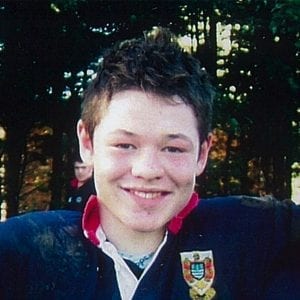
12. Inside-centre:
MARK IRELAND
When Mark came to Keswick School, his subtle skills very quickly identified him as a potential stand-off. He was a leftie with balance, a deceptive drop shoulder swerve and sidestep, and was an expert exponent of the switch, loop and offload. Mark never threw a bad pass and was therefore the ideal play-maker in a side which liked to run everything. He also understood when a kick was the best tactical option and his kicks, which never gave the ball away, were always measured to perfection. Mark switched to centre and played National League rugby for Kendal, Sheffield and Otley and was a member of the championship-winning Cumbria county side of 2018-19.
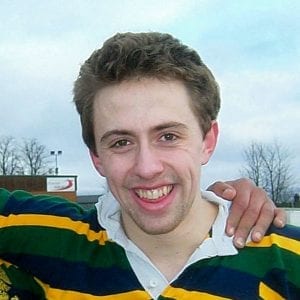
11. Left-wing:
DUNCAN LAWRENCE
Duncan was a flying machine whose natural instinct was to take-on markers on the outside. His acceleration into the available space was accessible on any surface and usually accompanied by a change of pace and an overdrive which, in numerous 7s competitions, made him unplayable. Duncan is Keswick School’s most prolific try scorer.
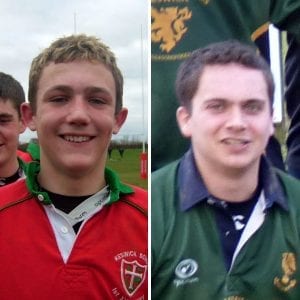
10. Stand-off:
GLEN WEIGHTMAN & JOHN HINE
No apologies for a split decision. Despite contrasting playing styles, both were effective school captains and they were both exceptionally good kickers and for school or club nerveless decision-makers and star performers in big matches. Glen was very highly skilled with a varied repertoire of tricks and passes. He was regarded as steadier than John but not as fast. John was alive with imagination and never afraid to try stuff to which there was a risk attached. I loved this eccentricity and never discouraged it. It is unthinkable that either of them could be excluded or that either would be entirely happy to change position to accommodate the other. Job sharing, or moving one of them to the centre when necessary, the potential for variety becomes endless.
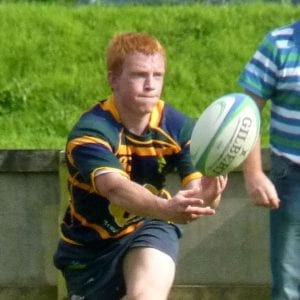
9. Scrum-half:
MATTY ROPER
Matty edged out some very stiff competition for this position, Jim Creighton in particular, but edging close calls against stiff opposition was Matty’s greatest specialty. His tenacity came naturally and helped him develop his skills in matches. Matty’s emphatic attitude to hard-graft, concentration, fitness and discipline, as well as his own physical commitment, helped enhance the performance of Keswick School packs, trained to play for 80 minutes. Put simply, Matty was never off their case.
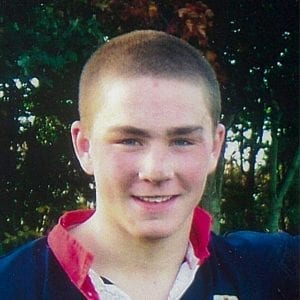
1. Loosehead-prop:
JOSH TERRY
Josh was so big and strong in years seven and eight that inexperience, questionable technique, the no push rule and his short-lived plan to become a winger, could not compromise his initial impact and subsequent contribution to Keswick School’s scrum dominance. Josh was more than just a prop. He was a distraction for opponents who were unsure about what they were dealing with. Josh joined the Marines and his acquisition of optimum fitness won him selection for the Royal Navy and Combined Services.
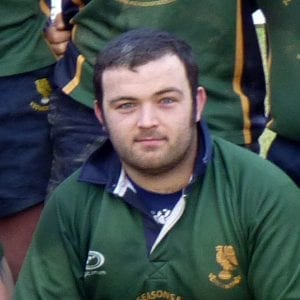
2. Hooker:
TOM SMITH & ASHLEY GASKELL
Tom and Ashley (pictured) were equals in both set-piece and loose. Both were skilled ball carriers, hard tacklers and intelligent tacticians. Both possessed fast feet and a fondness for heavy traffic. Both could scrummage low to advantage. Picking your hooker on the basis of his throwing accuracy at the line-out can often tilt the debate. Not in this case.

3. Tighthead-prop:
MICHAEL TAIT
Michael’s set-piece efficiency was augmented by a thirst for perpetual involvement all over the pitch. Mike loved a carry and soon developed prowess as a blaster with a preference for route-one. Most memorably, in a year eight games lesson match on “The Swamp” pitch Mike sprinted 30 metres through a thigh deep puddle for a try in the corner referred to as the deep end. Asked why he had done this rather than apply the unwritten rule to bring play away from the puddle asap, he replied “You told us to run straight.”
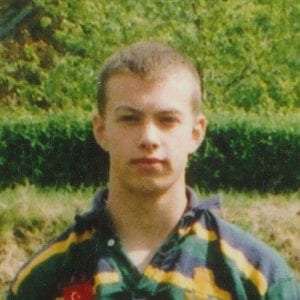
4. Second-row:
ADAM BLAYNEY
While it seems crazy that a coach should sidestep the claims for inclusion of accomplished, specialist second-row forwards like Karl Smyth and Matt Barton, the back five of my team’s scrum is comprised entirely of loose-forwards, starting with Adam Blayney. The justification for this calculated risk is that where there is an imperative to keep the game fast, guarantee passing continuity, play the responsible offload, add variety at the line-out and consistently threaten opposition ball at the breakdown, the presence of additional flankers has to be advantageous. Adam starred in successive Daily Mail Cup runs, the second as captain, and was a member of the side at the third Gulliver’s Super-16 short format tournament played at Warwick University in 2005.
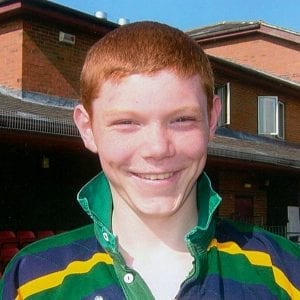
5. Second-row:
AARON THOMPSON
Like Adam, Aaron was a strong and an aggressive scrummager. In addition, they both adapted very quickly to the transition to assisted line-outs when they reached year 10. Both these players enjoyed notable Keswick school playing careers. Similarly determined, Aaran played every game as if it were his last and whether picking up and driving at the opposition, or ball-stealing at the tackle, he was one of the most ferocious competitors of the era.
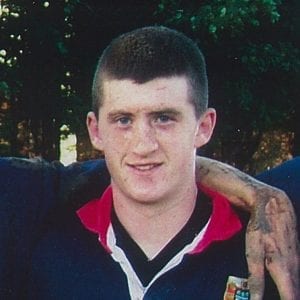
6. Blindside flanker:
BEN FARRELL
Ben was an outstanding captain from year seven to year 13 and from day one demonstrated the most complete understanding of what was possible, and legal, at the breakdown. Driven by an inexhaustible engine and blessed with precision timing, Ben was the most popular, consistent and significant contributor to the success of Keswick School’s best ever side. Also containing Hindmarch, Ireland, Terry, Tait, Smyth and Thompson, the team won at least one trophy in each of their seven seasons, finishing with a spectacular performance, winning the Keswick School 7s of 2007.
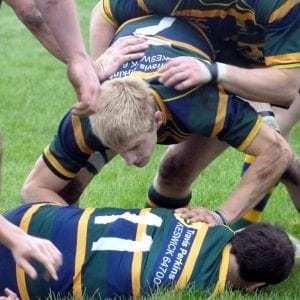
7. Open-side flanker:
DAVID RAY
David went from being “too small to risk” in year seven and eight to being the inspirational hard case constant at the sharp end of the action. Like Ben, David could run for 80 minutes, possessed the skill of a back and with no fear, used timing and technique as much as muscularity, to immediately turn his belting tackles into ball winning opportunities. David and the rest of my back-row trio personify Keswick School’s way to play winning rugby with gamecraft, ballskill, timing, inspiration, leadership, initiative and bravery which is present in all great players.
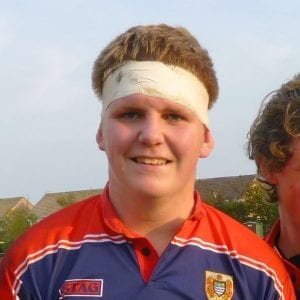
8. Number 8:
JAMES ADDYMAN
The selection of my No 8 remains unaffected by subsequent events. James died in 2019 aged 23 but his rugby stamp is indelible. Once described by an opposition coach as a “bear in a man suit”, James was the tower of strength in the 2007-14 side, captained by Jim Creighton, whose progress was so much influenced by James’ infectious enthusiasm, both on and off the pitch, that whenever he was unable to play, it seemed to lose 50 per cent effectiveness without his toughness and commitment, not to mention his black-belt level bonhomie.
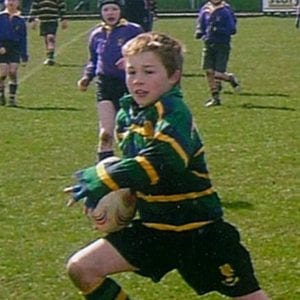
Replacements
A hooker, Karl Smyth, a stand-off and Jim Creighton (pictured).


